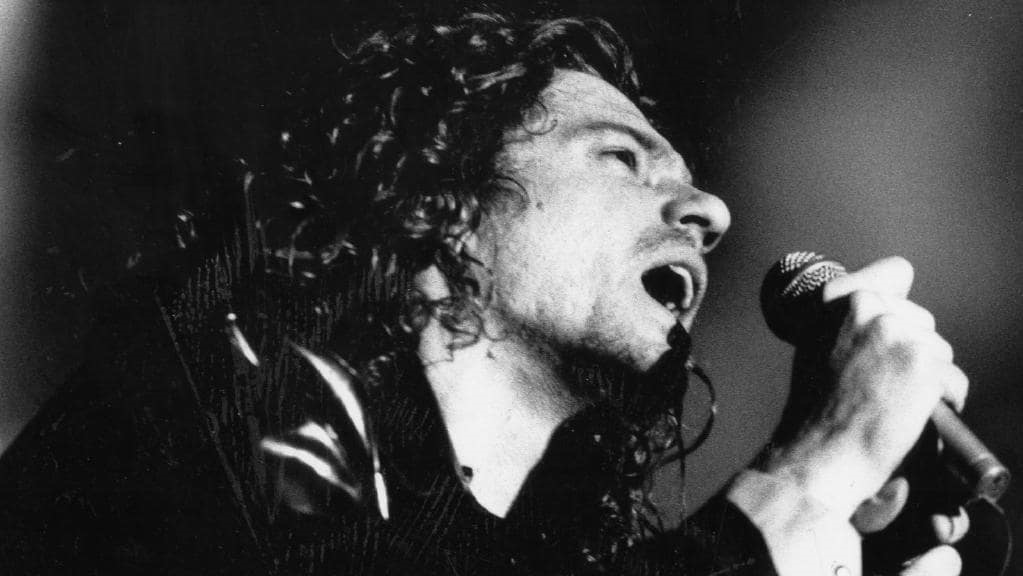
Placed between the Baby Boomers and the Millennials, Gen-X as a cohort of young people growing up in the 80’s witnessed the launch of Countdown (Australian TV series screened on the ABC, hosted by Molly Meldrum) and the birth of music video, with the launch of MTV in August 1981. During that time, Gen X were bombarded with a plethora of pop and youth culture options and phenomena, from post punk pop-rock, New Romantics, catchy American guitar pop and joyously flamboyant eccentrics like Cyndi Lauper, Dead Or Alive, Culture Club and Eurythmics.
In the late 70s and early 1980s, Australia saw the dominance of the hugely popular pub rock bands, out of which Countdown was crucial to the success of many leading Australian acts, including AC/DC, Olivia Newton-John, INXS, Dragon, Hush, I’m Talking, John Paul Young, Sherbet, Skyhooks, Jimmy and the Boys, Marcia Hines, Mark Holden, The Angels, Mondo Rock, Men at Work, Icehouse, Australian Crawl, Mental As Anything, Little River Band, William Shakespeare, Renée Geyer, Wendy and The Rockets, Billy Field, Split Enz and Jon English, just to name a few.
The MTV Revolution
Although it is not widely recognised, Countdown also had a strong international influence, because it was one of the first TV shows in the world to promote the regular use of the music video as a major part of its programming, though not long after the launch of MTV in America in 1981 the popularity of Countdown started to lose momentum and by the mid-1980s, Australian musical acts were making the transition from regular live performances to making promotional video clips. The key turning point of the MTV revolution was the explosion of Michael Jackson’s monster success ‘Thriller’ and it’s immensely popular and influential videos, ‘Billie Jean‘, ‘Beat It‘ and ‘Thriller‘ in 1982-3.
Jackson’s popularity at the time was a worldwide hype equal to the greatest of the greats, such as Elvis Presley, The Beatles, The Rolling Stones, Elton John, David Bowie and ABBA. Much was made at the time of the video for the first single, ‘Billie Jean’ which was cutting edge at the time with its plethora of visual ‘ideas’ such as the footpath squares illuminating each time Michael Jackson set foot on them, dancing down a path reminiscent of the yellow brick road in ‘The Wizard of Oz’, a beloved Jackson preoccupation.
‘Beat It’ was just as huge a phenomenon as ‘Billie Jean’ was, but in a dramatically different way. While ‘Billie Jean’ was a regretfully romantic song, a cautionary tale of fatally flawed love, ‘Beat It’ seethed with foreboding and tension, was much more rock and aggressive mixed with dance beats and did what no other song had ever done before. It brought underground gang culture and street violence into the living rooms and onto the radios of mainstream America by means of its lyrics and video, its imagery squarely centred in such themes. MTV championed these videos, played on huge rotation around the world and along with Michael Jackson is credited with bringing about the commencement of the MTV revolution. The third instalment in Jackson and MTV’s video revolution was the video for his song, ‘Thriller’. Not only did it provide iconic costumes, imagery and dance choreography but it pioneered the idea of the music video as short film, with ‘Thriller’ being presented as a 12-minute video, about half of which was the music clip itself and the other half was horror tribute mini-movie that was available to purchase as a stand alone video cassette. ‘Thriller’ set a huge precedent as to the power of the music video and again, proved insanely popular.
In January 1983, only a few weeks before the Grammy’s, Men at Work, a Melbourne quintet with pop, rock and reggae roots… achieved the rare feat of having the number one album ‘Business as Usual’ and single ‘Down Under’ in both the UK and US charts – at the same time. It was a first for an Australian act, something even the Bee Gees or Olivia Newton-John had failed to achieve. It was a magic combination of factors, while Air Supply had excellent songwriting, appealed to American tastes along much the same lines as REO Speedwagon, Christopher Cross and America the band, it was the sheer strength of Colin Hay and Men At Work’s songwriting that got them through. As well as that, Men At Work touched the zietgeist of the era, with their catchy, clever but often broodingly beautiful and reflective songs. Which were nevertheless written in a spiky, percolating way that gave them a sound that was contemporary and compelling for the time.
In the beginning, no record label was interested in them, their 1980 single, “Keypunch Operator” was self-financed and independently released. On that single’s flipside was a song very much in development called “Down Under“. No-one could have envisaged how big a role that ditty would play in the bands future. Even as they played to nearly-empty pubs, Hay and the band had their minds set on that international record deal.
Men at Work was no band of brothers though – in Hay’s estimation, the group ‘was five different people with different dreams and aspiration’ – but they did agree on this: they wanted their music to reach a bigger audience. At the time, the only local label with any genuine muscle was Melbourne’s Mushroom records, owned and run by Michael Gudinski. But Mushroom had made little impact in North America with Skyhooks, their brightest stars, who’d toured the US with zero success in 1976.
With this in mind, Men at Work’s manager, Russel Depler, set about finding the perfect record deal. Nathan Brenner, who would co-manage the band, having done hard time with Split Enz, one of Mushroom’s biggest acts, joined soon after. Peter Karpin, the same CBS exec who’d came to Air Supply’s rescue early on in their careers, agreed to stump up a few thousand dollars for a video and steered the band in the direction of the sand hills at Sydney’s Cronulla beach. That freewheeling, anarchic clip – for a new version of ‘Down Under’ – would make them MTV darlings. It’s a prime example of the power a music video had at the time to communicate and catch eyeballs, and as far as the American success goes, it was a matter of good timing as well. It was the same factor that contributed to the meteoric success of Crocodile Dundee in the US a few years later in 1987 also, the growing fascination with all things Australian, and the new and improved video of ‘Down Under’ proved a masterstroke in feeding that appetite.
Like much good art, ‘Down Under’ appears to be simplistic on the surface and might seem like a patriotic, jingoistic tribute to ‘Aussieness’, but on closer inspection both the video and the song’s lyrics are anything but, in fact a sly subversion and questioning of what Australian identity actually means. It is up to the individual on which level they want to respond to it. Either way, there is undoubtedly that larrikin Aussie humour in it, for example, the band’s flautist sitting in a tree playing flute to a stuffed koala toy hanging on a rope from a tree branch is just hilarious. That, the fact that the boys are running around on a beach horsing around, the presentation of Vegemite sandwiches and cracking of Foster’s Lager cans into glasses all give an impression of a wacky, fun-loving Australian paradise of uncomplicated, easy living. But if you really listen to the lyrics and watch the video closely, you’ll see that ‘Down Under’ in fact suggests Australia and its people are also quite stark, surreal and crazy, far removed from the Australian stereotype you might think the song is about at first glance.
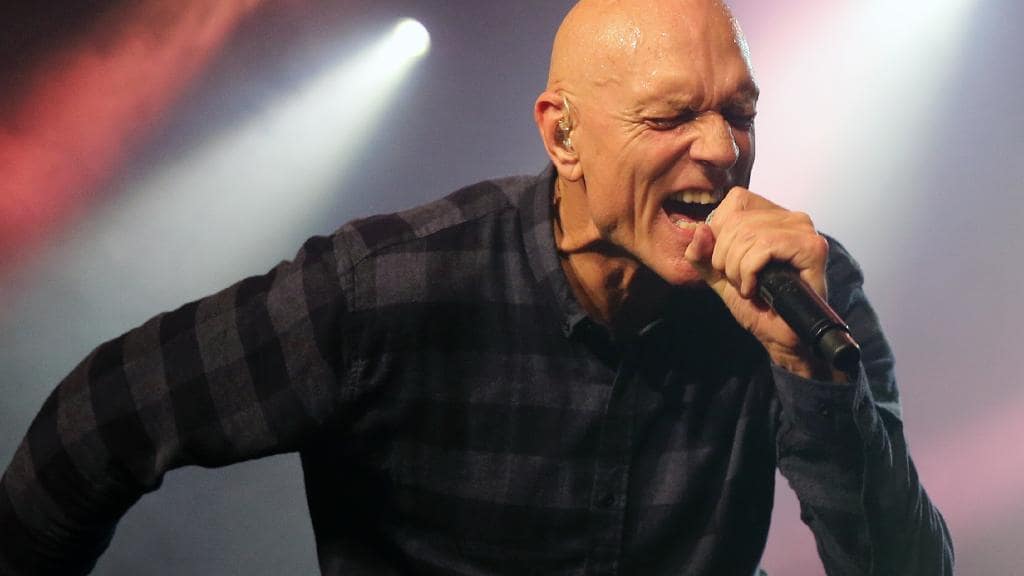 Peter Garret performing live on stageAn honourable mention must be mad of Midnight Oil with their epic 1982 song and video for ‘Power and the Passion‘, which gave a very different perspective on Australia, with their whip-smart, intellectually critical and wryly cynical take on the shortfalls of Australian culture that took a ‘so ridiculous it’s funny, but awful’ assessment of mindless consumerism and conformism and waste culture while corporate life and politics ravaged the country. Australian Crawl applied a similar caustic cynicism in songs like ‘Hoochie Gucci Fiorucci Mama‘ which staggeringly is still relevant today and in ‘Boys Light Up‘ with lines like “hopes are up for trousers down with hostess on the business flight tonight”, the latter of which produced a simple but memorable band video in 1980. In 1983 the song ‘Reckless‘ was a huge no. 1 hit for Australian Crawl, with its video featuring the scenery of Sydney Harbour described in the lyrics becoming much beloved across Australia. Again James Reyne’s lyrics in that song gave a scathingly accurate social realist picture of Australian life.
Peter Garret performing live on stageAn honourable mention must be mad of Midnight Oil with their epic 1982 song and video for ‘Power and the Passion‘, which gave a very different perspective on Australia, with their whip-smart, intellectually critical and wryly cynical take on the shortfalls of Australian culture that took a ‘so ridiculous it’s funny, but awful’ assessment of mindless consumerism and conformism and waste culture while corporate life and politics ravaged the country. Australian Crawl applied a similar caustic cynicism in songs like ‘Hoochie Gucci Fiorucci Mama‘ which staggeringly is still relevant today and in ‘Boys Light Up‘ with lines like “hopes are up for trousers down with hostess on the business flight tonight”, the latter of which produced a simple but memorable band video in 1980. In 1983 the song ‘Reckless‘ was a huge no. 1 hit for Australian Crawl, with its video featuring the scenery of Sydney Harbour described in the lyrics becoming much beloved across Australia. Again James Reyne’s lyrics in that song gave a scathingly accurate social realist picture of Australian life.
‘Great Southern Land‘ by Icehouse gave yet another perspective of Australian life in 1982, choosing to celebrate the wonder of the landscape from the perspective of Aboriginal eyes pre-English colonisation. The video created a brooding, dreamy and surreal landscape that accentuated the hauntingly smooth feel of the song, which became an iconic anthem much as ‘Down Under’ did. More punchy and direct with regards to Aboriginal loss of sovereignty in 1982 was Goanna’s no. 1 smash, ‘Solid Rock‘, an impassioned song sympathetic to Aboriginal loss at the invasion of the English in the late 1700’s. A simple band performance video, it is nevertheless well shot, interspersed with graphic animation of Aboriginal paintings and inspires with its lively performance.
In 1983 comedian Austen Tayshus had a humorous take on Aussie life and culture with his no. 1 comedy hit, ‘Australiana’, the video of which was much loved and featured footage of Tayshus performing intercut with scenes of various characters in the story at the quintessential Australian suburban backyard barbeque. Again indigenous imagery kicks off the video for Eurogliders’ 1984 no. 1, ‘Heaven’ as an animation of a young Aboriginal man looks over a red desert with a small town in the distance which then becomes live action. While again a basic but good quality band performance video intercut with scenes of the townsfolk at a loss for something to do and seeking escape, the desire for escape struck a chord with Australian audiences and the clip implanted itself into the national consciousness at the time.
INXS’s Long, Steady March
On August the 1st 1981, the day that MTV aired its first video, the Buggles’ ‘Video Killed the Radio Star‘, INXS was still a band on the move in Australia having just finished recording their second album, Underneath the Colours. But it wouldn’t take long before INXS and MTV collided – and the results were era-defining. In the pre-internet age, there was no better outlet for mass consumption of music than MTV. No MTV… no Prince! No Madonna! No Men at Work! No INXS.
INXS may not have been the ‘best’ Australian band to come out of the early 1980s – Cold Chisel, Midnight Oil, AC/DC, the Angels, Icehouse and others could all lay claims to that tag, but INXS would become the most image conscious, the most marketable. And probably the most successful. David Fricke, a highly rated writer for American Rolling Stone, summed up Hutchence as a fascinating, seductive and tormented creature.
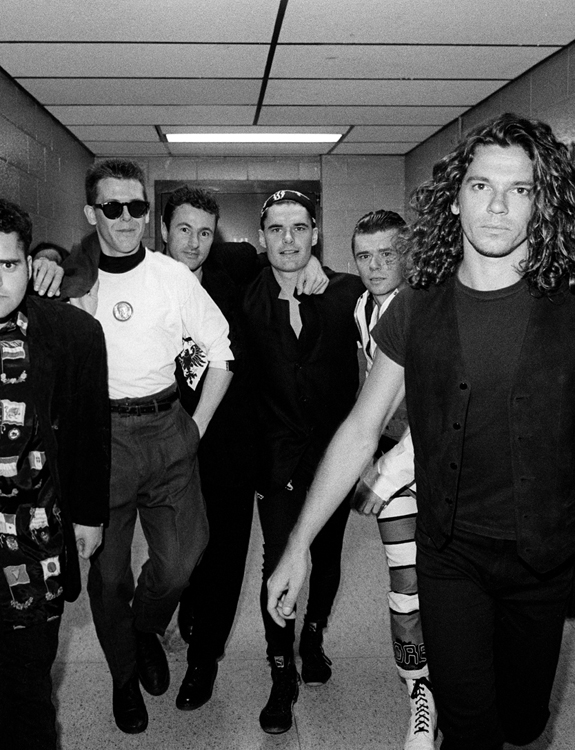 Shot backstage before the show for the 1988 KICK Tour. Chris Murphy, who had absolute faith in the band knew the band’s destiny lay offshore. While he set to work shopping for an international record deal, he commissioned the guys in the band to find the right producer for their next record, the big album that had the potential to break them globally. It was also a musical road trip for the band, as they drifted through America and then England, meeting with various production contenders and soaking up the different music scenes – new wave, electro-pop, hip-hop – that had emerged after punk had crashed and burned. All would leave their mark on the INXS sound.
Shot backstage before the show for the 1988 KICK Tour. Chris Murphy, who had absolute faith in the band knew the band’s destiny lay offshore. While he set to work shopping for an international record deal, he commissioned the guys in the band to find the right producer for their next record, the big album that had the potential to break them globally. It was also a musical road trip for the band, as they drifted through America and then England, meeting with various production contenders and soaking up the different music scenes – new wave, electro-pop, hip-hop – that had emerged after punk had crashed and burned. All would leave their mark on the INXS sound.
With record deals now in place with Atlantic subsidiary Atco (for North America) and Polygram for the UK and Europe, INXS’s international odyssey formally began in spring 1983. Gary Grant, who’d worked alongside Murphy in Sydney, set up an office in New York; he’d be their point man in America. On the wall of the office was a map of the world; over time, flags would be added to the map indicating where the band was making inroads. ‘In the early’80s in America,’ Murphy explained, ‘you had fat, rich guys playing stadiums…they were just getting fatter and lazier. I knew that it was going to change – quickly. I knew that if we attacked it, we’d be part of that. But I knew we had to work hard.’
Murphy’s bolshie theory was confirmed when he attended a radio industry conference in the US. A keynote speaker predicted that new wave was the next big commercial movement, set to take over North America, the biggest music market on the planet. Murphy was so inspired that he called a band meeting for 6 a.m, as soon as he stepped off the plane at Mascot. We’re going to America, like, right now,’ he told the sleepy band members. ‘You see, there’s this thing called MTV.’ It was ‘The One Thing’ that kicked off the long-standing relationship between INXS and MTV. Soon enough, INXS would shoot the first of many distinctive videos with Melbourne director Richard Lowenstein, who became another key player in the band’s rise to fame. Notably the videos for ‘Original Sin‘ and ‘I Send A Message‘ from 1984’s ‘The Swing’ were filmed in Japan and directed by Yasuhiko Yamamoto. Both videos use very confronting, seductive, cultured but accessible imagery, representing Japanese culture in all its strangeness and beauty with INXS in the middle of it, as though offering a secret, mysterious language of unknown imagery.
‘Original Sin’ presents INXS riding on motorbikes at night in Tokyo in long, dark grey coats, Hutchence in sunglasses. INXS’s songwriting was at a peak here, with brooding, moody guitars and keyboards, a good, meaty bass and punchy drum part and the seductive, captivating images of the video were highly effective in drumming home INXS’s message. So too was the video for next single from ‘The Swing‘, ‘I Send A Message’, starting with Hutchence singing on a tv in the middle of a Japanese shrine in a temple, he and the band soon appearing performing in front of the shrine, with some evocative footage of a geisha and a troupe of monks added to the equation. Add an energetic performance from Michael Hutchence and the band and again, you have a sublime, hypnotic video that uses Asian culture and imagery in a highly unique way, especially for the era, that proved incredibly effective in pushing INXS’s brand and image. Immensely popular third single, ‘Burn for You’, took a vastly different turn and returned to good old bogan Australia.
Well, not quite, in all truth it was more arty, leftie, progressive Australia. This time they took to Queensland with a loose narrative of INXS touring its regional centres, concluding in London, as if reaching a pinnacle of success. Hutchence had the idea after seeing a Richard Lowenstein video he did for Hunters and Collectors shot in Queensland, asked Lowenstein if he could shoot it for INXS and thus the video was born out of this. But the result was a balmy, summery, joyful celebration, depicting INXS partying with other trendy, arty mid-80’s people in their twenties in the choruses while Hutchence was shown running through the jungle, blinding light flickering brilliantly between the trees at times during the verses. While certainly an ad for Australia and all its good living on one level, moreover it was a celebration of that life and the innate freedom involved in it. Using the popular 80’s technique of texta coloured frame sequences and stop-motion passages of Michael Hutchence dancing, ‘Burn For You‘ proved a very successful amalgamation of these new visual effects and techniques and the lifestyle ethos as presented. This made an immense contribution to the song’s success, enormous popularity and longevity.
Olivia is the Word
Brisbane raised Steve Kipner was one of many local musicians who served time in England before finding no small amount of success Stateside. In the UK, admittedly, Kipner found some fame as part of a duo named Tin Tin which had a hit with the sentimental ‘Toast and Marmalade for Tea‘. He also forged close bonds with the Bee Gees and eventually found his nirvana in America, when he wrote the smash hit ‘Physical‘ for Olivia Newton-John. Physical both the album and the song, were as era-defining as Jane Fonda’s aerobics videos; in fact, Olivia borrowed liberally from Fonda for the song’s steamy film clip, as she donned a leotard and sweatband and cooed how it was time to ‘get physical’. Despite raising a few eyebrows – some radio stations in ultra-conservative Utah banned the song – it became the biggest hit of her stellar pop career, spending 10 weeks atop the Billboard Hot 100 chart in 1981, subsequently rating as the biggest song of the decade.
Kipner had written the song with Rod Stewart in mind, but things changed when he played the song to fellow Aussie, Roger Davies, who worked with Olivia’s partner/manager Lee Kramer. Davies was another Oz trailblazer. He’d moved to LA when Sherbet tried and failed to break into the US market. He’d join forces with Newton-John and subsequently orchestrated Tina Turner’s remarkable 1980s comeback. Davies later managed Pink, Cher, Janet Jackson and Sade.
When the demo was played to Olivia, she was unsure if it was right for her. ‘Roger told me that Olivia was worried about the public thinking it was too sexual,’ Kipner said, ‘and it would reflect badly on her, and so she didn’t want it released. Yet the record company insisted it be the first single. The compromise agreed on was to release a video first, before the song went to radio, intentionally to make people think the song was about exercising.’ The song revitalised Newton-John’s career after the Xanadu disaster, and also set Kipner up as a hot songwriter for hire – and a wealthy man. ‘It completely changed my life,’ he admitted. He’d come a long way from Tin Tin, just as Olivia Newton-John had come a long way since the Sol Four.
The ‘Physical’ video was about far more than exercising though, it comprised a cheeky commentary on the burgeoning exercise and aerobics culture around the world and also critiqued ideas of physical attraction, sexuality and desire, with Newton-John negotiating macho men, gays and a fat man in the gym during the course of the video. The message was that assumed stereotypes of physical desire and beauty were not, in fact, reliable pathways to ultimately emotional, rather than sexual satisfaction. This was all encased in fairly titillating, cheekily outrageous humour, taking on its subject of heavy sexual suggestion and framing it as a big joke, all in the spirit of fun. This powerful cocktail of ideas and messaging as not lost on the global music consuming and video-watching public and there is no doubt the very striking imagery of the video for ‘Physical’ helped propel it to the enormous worldwide success it found.
Air Supply Fan the Winds
By sheer weight of hits, Air Supply had opened up the US market to a different sound coming out of Oz: something way less ballsy than AC/DC, more intimate than Midnight Oil. Crowed House, who raided the American charts with the heartfelt ballad ‘Don’t Dream Its Over‘ in 1987, and Savage Garden, who went large several years later, may not have connected as strongly Statewide without Air Supply.
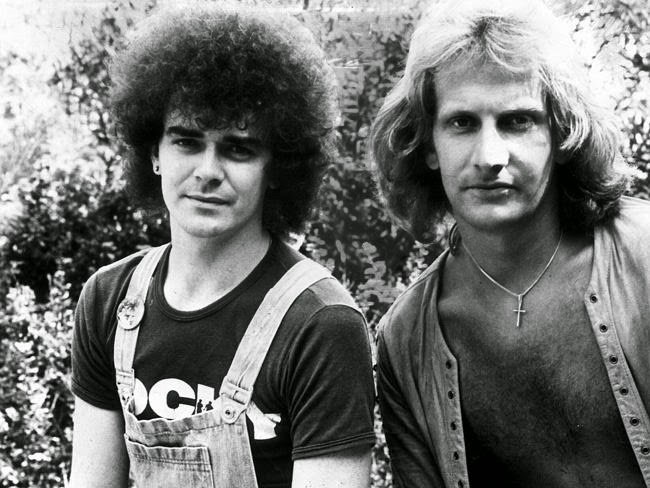
‘Lost in Love‘ was a hit in waiting, the song was nestled at the number two spot on the Billboard charts, with only Blondie’s ‘Call Me‘ blocking it from pole position. As it turned-out, Air Supply had timing on their side, in the wake of solid gold stars like the Carpenters and Australia’s own Olivia Newton-John, a market had opened up for tender, carefully constructed love songs, which Russell, who regarded the Beatles as his creative touchstone, had no shortage of.
In October 1980, ‘All Out of Love‘ peaked at number four, overtaking Olivia Newton-John’s ‘Magic‘ on the way to the top five. Russell, who was no fool; understood the power of a simple, well-written pop song. Perhaps, over time, he’d veer close to Hallmark-ish sentiments, with the unequivocal sound that these short, sharp, powerful love songs so eloquently portrayed. In Australia as well as the US, Air Supply’s music was everywhere in the early 1980s. Though it wasn’t strictly Australian and American audiences that were soaking it up.
In 1981, as a part of their ‘anywhere/anytime’ policy, Air Supply accepted an offer to tour South East Asia. The trip would open up a whole new world for them, one that they still rule more than 30 years down the line. Unlike most of the other Australian acts from this golden age, Air Supply knew that one day their American juggernaut would slow down, and duly spread their music beyond the States. It proved to be one of the more astute moves they ever made.
‘We didn’t even know where Taiwan was when we were offered the chance to go there,’ Russell laughed. ‘We were young, we were on top of the world, so we said, “Yeah, let’s go.” Our sound was very much what they wanted at a time when Asia culturally wanted to start opening up to the west, ‘he added. ‘Had it been any heavier, they wouldn’t have allowed us inside.’
When their greatest hits album was released, Arista splashed out on an Air Supply billboard on Sunset Strip, the same billboard the guys had seen from their room at the Riot House when they first arrived some six years earlier. But this was a billboard with a difference, as Russell explained.
‘At the bottom, in big writing, it showed the number of albums sold. Every week it’d be crossed out and a new number put up there, adding several hundred thousand more. In the end it was six million or something – right up there on Sunset.’
Superstardom
In the Northern Hemisphere, the video age had seen Duran Duran catapulted into the mainstream with the introduction of the 24-hour music channel MTV. Many of Duran Duran videos were shot on 35 mm film, which gave a much more polished look than was standard at the time. They also collaborated with professional film directors to take the quality a step further, often teaming up with the most prominent music video director of the 1980s; Australian film director, Russell Mulcahy.
Although Roxy Music and its experimental art-school approach to making music have been lauded as the cult indie group The Smiths, grunge gods Nirvana and overlords of stage-camp Scissor Sisters (all for different reasons), it is arguably the decadence of the band’s carefully cultivated peacock-ery that propelled it to superstardom, prophesying with a wink the sleeky manufactured pop culture that dominated the 1980s.
Russell Mulcahy’s career began as a film editor for Australia’s Seven Network. After making a number of film clips for Australian bands, including Dragon, he relocated to the UK around 1976, Mulcahy joined Jon Roseman Productions International and made successful music videos for several noted British pop acts—his early UK credits included The Sex Pistols, XTC’s “Making Plans for Nigel” (1979), The Vapors’ hit ‘Turning Japanese‘ and his landmark video for The Buggles’ ‘Video Killed the Radio Star‘ (1979).
In 1978, he went to the United States (for Roseman) and directed videos for The Cryers and Candi Staton – where he first used the “jump cut” – under producer Paul Flattery. Other Mulcahy innovations included spot color, body painting, glass matte shots and faux widescreen aspect ratio (first used on his Ultravox and Rod Stewart videos) which have all become standards for the genre. By the mid-1980s Mulcahy was directing videos for some of the most successful pop-rock acts of the period including Culture Club ,The Human League, The Tubes, Elton John, Ultravox, most of the major hits of Duran Duran, Spandau Ballet, Kim Carnes, Bonnie Tyler, Rod Stewart, Billy Joel, The Motels, Supertramp, Kenny Loggins and The Rolling Stones.
While Roxy Music used fashion to amplify its initial sonic ambitions, Duran Duran was, says Price, wholly invested in the pure power of fashion as its route to superstardom. Direct competitors and initially New Romantic band that like Duran, crossed over and became titans of the mainstream Spandau Ballet followed a similar path, but the songs were there with both bands, writing incredibly beautiful and sophisticated pop songs, for example ‘Planet Earth‘ and ‘Hungry Like The Wolf‘ by Duran Duran and ‘True‘ and ‘To Cut A Long Story Short‘ by Spandau Ballet. All of which had striking videos that in the case of Duran Duran became legendary. Both ‘Planet Earth’ and ‘To Cut A Long Story Short’ featured rakish New Romantic fashions with a strong Northern European bent with Russian elements in both instances. This captured the attentions of millions in the New Romantic craze at the very beginning of the 80’s.
‘Planet Earth’ paid tribute to the space sci-fi genre with a glamorous flavour that tied in nicely with the futuristic sci-fi theme of late 60’s movie ‘Barbarella’ from which Duran Duran took their name. ‘Hungry Like The Wolf’ was part of the legendary Russell Mulcahy video series including ‘Save A Prayer‘ where we were taken to Sri Lanka, basing its theme on early 20th Century action adventure movies and progressed to lead singer Simon Le Bon cavorting with exotic models in the jungle. Video clips like this burned themselves onto the retinae of an entire generation across the globe, providing a huge amount of enjoyment and showed the kind of creativity that could go into music videos and what an incredibly powerful medium they could be.
Third single from album ‘Be Yourself Tonight’, ‘Sisters Are Doing It For Themselves‘ produced a video that made as huge an impression as the song that accompanied it, where Lennox dueted with soul queen Aretha Franklin amongst various pieces of rousing, feminist female empowerment-themed footage. Fairly outrageously open and frank queer imagery appeared again in 1984 with Bronski Beat’s video for Smalltown Boy, a no holds barred depiction of a gay bashing that occurred after a mistaken approach at a straight guy using swimming pool changerooms as a beat and consequent family rejection and aggressively camp New York drag queen Divine’s video for her surprise very big hit, ‘You Think You’re A Man‘.
For a time which was in some ways fairly homophobic, in Britain at least, pop culture was no more comfortable celebrating homosexuality than it was in the 80’s. Bronski Beat produced three more epic, humorously flamboyant queer positive videos for their next two singles, gay liberation anthem ‘Why‘ and their cover of ‘It Ain’t Necessarily So‘, reappropriated for pro-gay narrative purposes and the outlandish video for the cover of Donna Summer’s ‘I Feel Love‘, surfing on a camp iridescent fabric river with fellow queer luminary, Marc Almond of ‘Tainted Love‘ Fame. Then in 1986 with the lead single ‘Hit That Perfect Beat‘ from their second album, again Bronski Beat showed their queer leanings in no uncertain terms with both a very camp video and song.
Meanwhile, in 1984 Frankie Goes To Hollywood blatantly celebrated orgiastic gay leather sex parties in some degree a jaw dropping, blatant way in the song and video for ‘Relax‘. Heterosexual audiences the world over lapped it up, no-one seemed to care about the gay content, it just seemed content enough given that it was about sex. The video for their follow up single ‘Two Tribes‘, about the mutually assured destruction promised by nuclear one upmanship, provided some of the most iconic imagery of the first half of the 80’s with its depiction of then USSR President Yuri Andropov & US President Ronald Reagan wrestling in a flour-filled ring surrounded by cheering representatives of the world’s nations. Iconic for the sense of explosive conflict suggested by the wrestling of the two men and its darkly humorous connotations.
While not outwardly gay at the time, the certainly gay in spirit and content Wham! and George Michael provided us with some of the most joyously iconic videos of the 80’s with Careless Whisper, Club Tropicana, Last Christmas and most famously, Wake Me Up Before You Go Go. Like Frankie Goes To Hollywood and the ‘Relax’ and ‘Frankie Says…’ Relax spawned, this video gave birth to its own ‘Choose Life’ t-shirt line as seen in the Wham! video. These t-shirts made an appearance not only in the 80’s but enjoyed a resurgence again in the 90’s and 00’s up until the early 20 teen’s as a periodic retro chic fashion line, the longevity of which was really a very impressive achievement. Pet Shop Boys appeared with a modest but well-received debut in the form of the second version of ‘Opportunities‘ and then came roaring into the public global consciousness with the massive global hit, ‘West End Girls‘ in 1986.
Pet Shop Boys introduced a new kind of gay consciousness into pop music. While not declaring themselves as obviously gay as they were, they offered an obviously fiercely intellectual and culturally highly sophisticated sensibility in queer representation of a decidedly British persuasion that had never been seen before in pop music. They loved high fashion labels from Thierry Muglier to Boy London and Issey Miyake, parading them proudly and shamelessly in music videos and photo shoots while Neil snootily declared in interviews, “We’re a disco group, not a pop group.” They also made a point of creating a universality, so as well as their queer essence, Pet Shop Boys could appeal to heterosexuals as much as gays, as they did and still do to this day.
Clever Innovators
Innovation and novelty abounded in 80’s music videos, often featuring multiple characters in costume, from Captain Sensible’s wacky romp in ‘Wot‘, the colourful, motley crews in Cyndi Lauper’s ‘Girls Just Wanna Have Fun‘ and ‘Goonies R Good Enough‘ whilst the looney Californian beachgoers in Van Halen singer David Lee Roth’s joyous version of the Beach Boys’ ‘California Girls‘. Van Halen themselves provided one of the best loved rock band videos of the mid-eighties in ‘Jump‘ and otherwise, Cyndi Lauper and A-Ha used clever animation in ‘She Bop‘ and ‘Take On Me‘ respectively while Lauper was flying across the stage singing in a garbage bin in the live video for ‘Money Changes Everything‘.
Again, Dire Straits made a huge impact with use of animation in the video for ‘Money For Nothing‘ in 1985, a song which had lyrics about MTV and actually critiqued the new MTV and music video culture of the 80’s, generating huge amounts of discussion and celebration. All the videos just mentioned were hugely influential during the 1980’s as the constant bombardment of innovation progressed at a breakneck pace. As did Toni Basil with her simple but explosive cheerleader video for ‘Mickey‘, Pat Benatar with her epic New York street battle dance extravaganza for the smouldering, impassioned ‘Love Is A Battlefield‘. Rod Stewart’s 1982 video for disco song ‘Young Turks‘ featured similar street gang-themed dancers backing up runaway rebel young lovers, also making a genre-defining contribution to music video.
Sexual suggestion featured in Stewart’s outrageous pool party video for ‘Tonight I’m Yours‘, while Duran Duran made an enormous impression on the sexual outrage front with the ‘Girls On Film‘ video. On which note, who could forget Billy Idol with his brazen sexuality in the cheeky videos for ‘Rebel Yell‘ and ‘Eyes Without A Face‘, which featured scantily clad women slapping their upper thighs and butts in sync with the electronic handclaps in the middle of the song. Ido’s famed guitarist Steve Stevens made the leap to Michael Jackson’s video for ‘Dirty Diana‘ from Jackson’s 1986 album ‘Bad‘ to searingly explosive effect, whereas the video to his ‘Smooth Criminal‘ became an 80’s legend-creating masterclass in gravity-defying dance choreography.
As did Madonna, another of the major players in the MTV revolution, creating sensation after sensation with both her songs and videos from one end of the 80’s to another. Her video for early hit ‘Lucky Star‘, which like Toni Basil’s ‘Mickey’ was a simple affair of Madonna and her dancers in a white studio, was hugely influential for the magic combination of costumes, choreography and energy. From the footage of her and her brother Christopher dancing on stage at Top Of The Pops in London to the underground New York club in ‘Into The Groove‘, various forms of club dance culture created iconic music video imagery from Madonna in the 1980’s.
She went more pop and social realist with the lead single from 1986’s album ‘True Blue’, ‘Papa Don’t Preach, and again the video for the single created a global tidal wave of discussion for bringing the subject of abortion to the world conversation and then a more glam and showbiz form of dance with the clip for ‘Open Your Heart‘. ‘La Isla Bonita‘ and ‘Who’s That Girl?‘ featured Spanish dance, and at the end of the 80’s,’Like A Prayer‘ created another global storm of controversy with its depiction of Madonna kissing a black Jesus crying blood, another era-defining dance celebration with ‘Express Yourself‘ and more controversy with its representations of BDSM. Madonna was the queen of the 1980’s as far as being possibly the single biggest benefactor and innovator of the MTV revolution throughout the decade.
Another noteworthy innovator was Tom Petty and the Heartbreakers with their ingenious psychedelic Alice In Wonderland-themed video ‘Don’t Come Around Here No More‘ video featuring Eurythmics’ Dave Stewart as the hookah pipe smoking, sitar-playing caterpillar atop a giant mushroom. Petty was one of a slew of rural-influenced or based acts from the American heartland that produced some of the most major American, and in the case of Bryan Adams, Canadian videos of the 1980’s. This is in stark contrast to the uber-modern London, New York and LA club and fashion culture that fuelled most of the international artists mentioned thus far. Bryan Adams was singing in the mountain snow in 1983 hit ‘Run To You‘ and out in a derelict rural barn in 1985’s monster hit, ‘Summer Of ’69‘.
John Mellencamp lifted the lid on the hardship and struggle of rural America with the singles from the album on which his star rose, 1985’s ‘Scarecrow’ and the 1986 follow up ‘The Lonesome Jubilee’ that made him an 80’s megastar. The clip for ‘Rain On The Scarecrow‘ starts with three farmers talking about being financially destroyed by untenable government loans and the song then proceeds to elaborate on this theme as it shows all aspects of American rural and farm life. Similarly, video for the lead single from ‘The Lonesome Jubilee‘, ‘Paper and Fire‘, basically recreates a hoe down by a row of weatherboard houses on a mud street in the deep South with black and white people as the song recounts its sorry tale of failed dreams.
Bruce Springsteen had a mega hit with his album ‘Born In The USA’ however the only video that made a significant contribution to the ongoing MTV revolution was that of ‘Born In The USA‘, lead single from the album, depicting Springsteen performing on stage and bringing a girl up from the audience to dance on stage with him at the end. However, the videos from all four singles comprised a powerful representation of working class, steel town America Springsteen is known for singing about, complementing the picture created by Bryan Adams and John Mellencamp. 70’s greats Elton John and Bruce Springsteen also made significant contributions to the canon of iconic videos in the 80’s.
Such as John’s video for ‘Nikita‘, singing a love song to a Russian woman behind the communist fence in the snow and the classic dance spectacular on the beach at Cannes, ‘I’m Still Standing‘. While Joel had four singles from his monster hit mid-80’s album ‘An Innocent Man‘ in the videos, all of which emblazoned themselves across the national psyche of the US. ‘Uptown Girl‘ motor mechanic set video to accompany this 50’s doo wop style song also charted working class aspiration in the most cheerful, optimistic way and spoke to the heart of the US nation with this display of pure Americana, although interestingly, amongst its obviously very gay dancers there were a couple of camp, feminine black men in midriff tops doing rap dance moves.
Bringing the Americana back to the city was Huey Lewis and The News who in 1985 became huge, of course with ‘Power Of Love‘ from ‘Back To The Future’ which had a plain, but popular video of Lewis and band singing in a darkly lit bar. However their subsequent videos were a lot more colourful, very popular and made an important contribution to the fabric of mid-80’s MTV culture. ‘If This Is It‘ took place on a California beach while ‘Stuck With You‘ featured Lewis and the News at a Beverly Hills pool party. Both are very beautiful songs, yearning and romantic but treat their subjects with upbeat, wryly humorous themes in both videos, which also capture something of the spirit of ridiculous US 80’s excess but do it with so much light-hearted panache and style.
Meanwhile in Britain in the late 80’s, gay disco loomed large, thanks mainly to Stock, Aitken and Waterman and Pet Shop Boys. Dead or Alive made a huge splash with ‘You Spin Me Round‘ with the flamboyant and outrageous lead singer Pete Burns entertaining and amusing us royally with his upfront camp in the clip for the song, which became one of the most beloved and iconic videos and songs of the 80’s. Also blessed with the songwriting gifts of Stock Aitken and Waterman were Bananarama, who scored an equally huge hit and classic video with ‘Venus‘, an anthem just as much to gay and heterosexual audiences. Pet Shop Boys reappeared with the thinnest of veils over their gay subject matter with ‘It’s A Sin‘, ‘What Have I Done To Deserve This?‘ and ‘Domino Dancing‘ between 1987-88, all of which produced celebrated videos to accompany the masterfully crafted Hi-NRG and high disco pop creations they supported.
Aussie National Hero’s
Various profound and personal experiences and issues as well as hedonistic abandon predominated in many of the most well known and loved Australian videos from the second half of the 80’s. With the video for their big hit, ‘Out Of Mind, Out Of Sight‘ in 1985, Models took a comparatively simple club performance video and its director, set and costume designers gave it a very effective presence by infusing it with so much energy and stylistic consistency from the patrons’ clothing to the mood lighting of the club. Models created a similar impact with the equally loved video for follow up single and second big hit in 1985, ‘Barbados‘. Semi-comical, semi-nostalgic, the video intercut home video footage including south Pacific Islander singers adding to its tropical feel with a story about the band visiting a lively seaside bar and performing the song on a mop and pool cues. The video for ‘Barbados’ very effectively complimented the haunting melancholy of the song.
1986 brought us one of the biggest Australian songs in the history of chart music, ‘You’re The Voice‘ by John Farnham. Its video is also one of the biggest and most popular in our history, for the simple fact of its richly coloured set design and an emotionally powerful and impassioned performance from Farnham. Another important Australian song and video appeared in 1987 in the form of ‘To Her Door‘ by Paul Kelly. In it, a young, apocryphally Australian working class man and woman were shown in the process of a relationship break up, at their house and riding in their taxi. It struck a chord with audiences across the country for its honest portrayal of real people in their gritty but warm-hearted reality. INXS and Jimmy Barnes recorded a cover of ‘Good Times‘ for the US teen vampire film, ‘The Lost Boys’. While another basic band performance clip, this time just in a recording studio, it captured people’s imaginations with its raw, impassioned performance and became something of a benchmark for middle class teen rebellion at the time, uniting Aussie national heroes Jimmy Barnes and INXS for a song and video with a decidedly pun spirit of defiant hedonism.
Later that year INXS released the first single from what would become a monster hit album ‘Kick‘ in 1988 that would prove to be their biggest ever and jettison them into international superstardom, ‘Need You Tonight‘. The video proved a very effective and visually striking affair involving multiple streams of footage of the band superimposed over each other in a blacked out studio, some of which were colour tinted by computer software. On a very different end of the spectrum came INXS frontman Michael Hutchence’s future lover, ‘Neighbours’ soap star Kylie Minogue’s debut single, ‘The Loco-Motion‘ in late 1987, a cheery and energetic video with Minogue and dancers performing over a graffiti street art backdrop. ‘Loco-Motion’ was a smash that, made Minogue an instant pop star and became one of the best loved Australian videos of the late 80’s. It also showcased rather remarkably that Minogue became the only Aussie to join UK dance pop superstars Dead Or Alive and Bananarama in being managed and produced by the golden songwriting touch of Stock Aitken and Waterman.
One of the major releases of 1987 was Midnight Oil’s classic, ‘Diesel and Dust’, spawning the two legendary songs about Aboriginal displacement and the legacy of debt European civilisation owes to the Aboriginal people whose land we took and civilisation we destroyed, ‘The Dead Heart‘ and ‘Beds Are Burning‘. The former of which is shot around Uluru and intercut with animations of indigenous art not unlike Goanna’s ‘Solid Rock‘ in 1982. The latter of which is also filmed largely in the Australian desert at times superimposed with computer treated Aboriginal faces in tribal paint but also ends up in Sydney showing indigenous people dancing while Midnight Oil performs. Both videos are compelling, powerful and two of the most important in the history of rock music. They also profoundly bookend Australian rock and pop music’s thoughtful and sensitive take on indigenous themes and concerns from one end of the 80’s to another.
Kylie Minogue’s star continued to rise in 1988 with second single, ‘I Should Be So Lucky‘, producing another equally iconic song and video as ‘The Loco-Motion’. INXS had two more major songs and videos with ‘Devil Inside‘ and the famous ‘Never Tear Us Apart‘ clip shot in Prague, Czechoslovakia. Daryl Braithwaite had a big comeback in late 1988 after years in the wilderness since the heyday of Sherbert in the 70’s with the beautiful but melancholic ‘As The Days Go By‘, accompanied by a clip filmed on a stylish studio set with a silhouetted ‘Bond girl’ dancer, creating a powerful impact mixing style with melancholy. Australia had come a long way since the early 80’s, here and internationally the entire decade having been an incredible rollercoaster and a fantastic voyage of colour, light, humanity and passion.




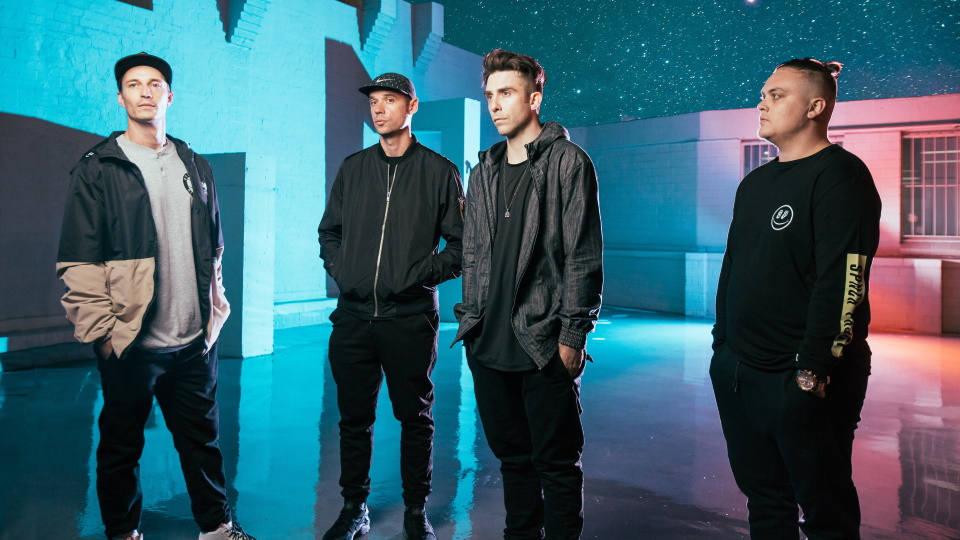

Comments